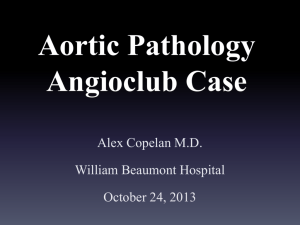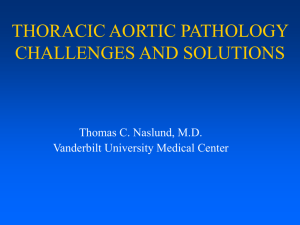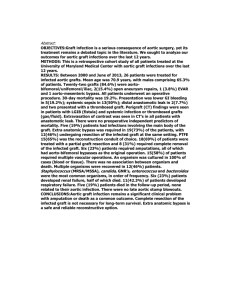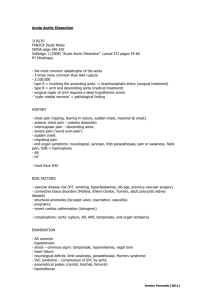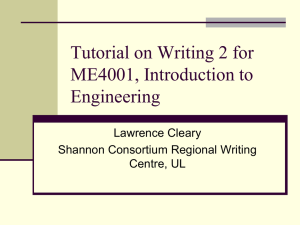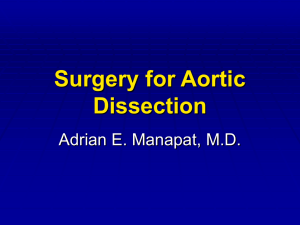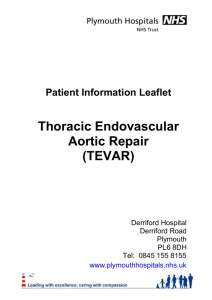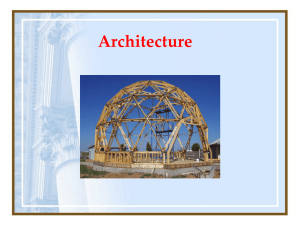View PowerPoint Slides - American Association for Thoracic Surgery
advertisement
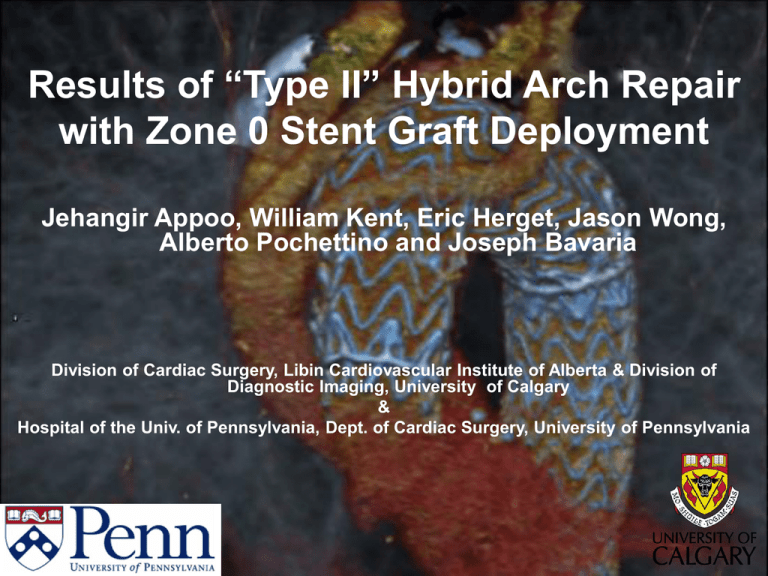
Results of “Type II” Hybrid Arch Repair with Zone 0 Stent Graft Deployment Jehangir Appoo, William Kent, Eric Herget, Jason Wong, Alberto Pochettino and Joseph Bavaria Division of Cardiac Surgery, Libin Cardiovascular Institute of Alberta & Division of Diagnostic Imaging, University of Calgary & Hospital of the Univ. of Pennsylvania, Dept. of Cardiac Surgery, University of Pennsylvania Evolution of Management Options for Diffuse Pathology of the Ascending, Arch and Descending Thoracic Aorta I. Conventional open two-stage procedure I. Treatment mortality including first stage, second stage and interval mortality as high as 36% in contemporary series Etz, Griepp et al. EJCTS 2008;34;605-615 II. Frozen stented elephant trunk concept (E-vita Registry) I. 15% operative mortality and 8% SCI Jakob, H et al. J of Cardiovasc Surg 2011;52(5):717-23 III. Type I Hybrid – Arch Debranching Procedure III. Antoniou et al., Eur J Vasc Endovasc Surg 2010;39:683-690 : 10.5% incidence of proximal Type I endoleak, retrograde Type A dissection and graft migration IV. Type II Hybrid Arch Procedure I. Allows for full arch reconstruction while avoiding prolonged circulatory arrest and complications associated with distal arch replacement. Minimizes the risk of late proximal graft complications (retrograde dissection) by placing the endograft within surgically replaced dacron ascending aorta. May have advantages for managing both acute and chronic diffuse thoracic aortic pathology. Calgary/UPenn “Type II” Hybrid Milewski, Bavaria et al., JTCVS 2010;140:590-7 Kent, Appoo et al., Ann Thorac Surg 2011; In Press. The “Type II” Hybrid Option Advantages: 1.Single stage 2.“Bavaria graft” replaces diseased ascending aorta, provides robust fixation for stent graft and minimizes risk of endoleak and retrograde dissection The “Type II” Hybrid Option Advantages: 3. Avoidance of prolonged circulatory arrest 4. CPB is advantageous: • Cerebral protection • perfusion during arch debranching • Resection of ascending aorta Brachiocephalic Trunk Branch Left Common Carotid and Left Subclavian Branches 28 mm Tube Graft Endovascular System Delivery Branch Branches to Left Carotid and Left Subclavian Arteries Branch to Innominate Artery Under Innominate Vein Native Ao Arch Proximal Stent Graft Landing Zone in Replaced Ascending Aorta Procedure • • • Replacement of Ascending +/- aortic valve and root repair Arch debranching Antegrade endovascular stent graft deployment Operative Details Intraoperative Temperature Mean CPB time Mean Cross-Clamp Time *Circulatory Arrest (Simple open distal) Stent’s Deployed Antegrade (mean #) Aortic valve repair +/- root work * Last 9 cases done without circulatory arrest 25 - 32°C 259 min 100 min 9/18 patients 1.9 4/18 patients Results: Perioperative Variable Successful technical deployment No. (%) 18 (100) In-hospital mortality 1 (5.5) Transient paraplegia 3 (16.7) Permanent paraplegia 0 (0) Renal Failure (Dialysis) 0 (0) Reoperation for bleeding 4 (22.2) Stroke 1 (5.5) Type II Hybrid Procedure: • Technically achievable repair • Less invasive and potentially improved perioperative outcomes • No incidence of rupture, aneurysm progression, or retrograde type A dissection at 2 year follow up. • Attractive option for patients with diffuse thoracic aortic pathology • Long-term results yet to be determined
